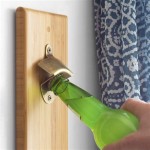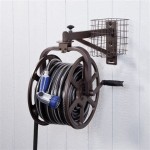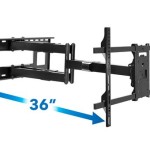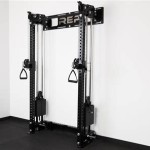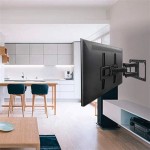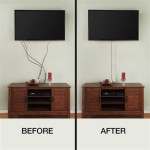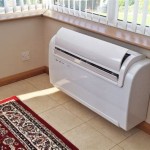Elevating Bathroom Design: A Comprehensive Look at Stainless Steel Wall Mounted Toilets
The evolution of bathroom fixtures has seen a shift towards designs that prioritize hygiene, durability, and space efficiency. Within this context, the stainless steel wall mounted toilet has emerged as a prominent choice for both residential and commercial applications. This article provides a detailed examination of the features, benefits, installation considerations, and maintenance requirements associated with stainless steel wall mounted toilets.
Stainless steel, a material renowned for its corrosion resistance, strength, and aesthetic appeal, offers several advantages over traditional ceramic toilets. Wall-mounted configurations, in turn, maximize floor space and facilitate easier cleaning. When combined, these features contribute to a bathroom environment that is both visually appealing and functionally superior.
Key Benefits of Stainless Steel Wall Mounted Toilets
Several key advantages contribute to the growing popularity of stainless steel wall mounted toilets. These benefits extend beyond mere aesthetics, encompassing hygiene, durability, and accessibility considerations.
Hygiene and Cleanliness: Stainless steel, unlike porous materials like ceramic, does not readily harbor bacteria or mold. Its smooth, non-porous surface inhibits the growth of microorganisms, making it inherently more hygienic. The wall-mounted design further enhances cleanliness by eliminating the need to clean around the base of the toilet, reducing the accumulation of dirt and grime. This is particularly important in high-traffic areas like public restrooms or healthcare facilities, where maintaining a sanitary environment is paramount.
Durability and Longevity: Stainless steel is a highly durable material that can withstand significant wear and tear. It is resistant to scratches, dents, and corrosion, ensuring a long lifespan even under heavy use. Unlike ceramic toilets, which are susceptible to cracking or chipping, stainless steel toilets are far less likely to sustain damage. This makes them a cost-effective option in the long run, reducing the need for frequent replacements. The robust construction also makes them suitable for environments prone to vandalism or accidental damage.
Space Efficiency and Modern Aesthetics: Wall-mounted toilets offer a significant space-saving advantage, particularly in smaller bathrooms. By concealing the tank within the wall, they free up valuable floor space, making the bathroom feel larger and more open. The sleek, minimalist design of stainless steel complements modern bathroom aesthetics, adding a touch of sophistication and elegance. The clean lines and reflective surface of stainless steel create a visually appealing and contemporary look. Furthermore, the adjustable height feature allows for customized installation to accommodate individuals of varying needs.
Installation Considerations for Stainless Steel Wall Mounted Toilets
Proper installation is essential to ensure the optimal performance and longevity of a stainless steel wall mounted toilet. Installation requires careful planning and attention to detail, particularly with regard to the wall structure and plumbing connections.
Wall Structure and Reinforcement: Wall-mounted toilets require a sturdy wall structure capable of supporting the weight of the toilet and the user. The wall must be reinforced with a steel frame, also known as a carrier system, that is securely anchored to the floor and studs. This carrier system bears the weight and provides a stable platform for the toilet. The type of wall construction (e.g., drywall, concrete, brick) will influence the type and amount of reinforcement required. It is crucial to consult with a qualified contractor or structural engineer to ensure that the wall can adequately support the toilet.
Plumbing Connections and Drainage: Proper plumbing connections are essential for the efficient functioning of the toilet. The water supply line must be properly connected to the concealed tank, and the drainpipe must be correctly aligned to ensure proper waste removal. It is important to use appropriate fittings and seals to prevent leaks. The drainpipe diameter and slope must also comply with local plumbing codes. It is advisable to engage a licensed plumber to handle the plumbing connections to ensure that they are done correctly and safely. The plumber will also be able to advise on the best way to integrate the toilet into the existing plumbing system.
Height Adjustment and Accessibility: One of the key advantages of wall-mounted toilets is the ability to adjust the height. This allows for customized installation to meet the needs of different users, including those with mobility limitations. The height of the toilet should be determined based on the user's comfort and accessibility requirements. In accordance with the Americans with Disabilities Act (ADA), accessible bathrooms must have toilets installed at a specific height. It is important to consult with ADA guidelines to ensure that the installation complies with accessibility standards. Proper height adjustment can significantly improve the comfort and usability of the toilet for all users.
Maintenance and Care of Stainless Steel Wall Mounted Toilets
Maintaining a stainless steel wall mounted toilet is relatively straightforward. Regular cleaning and proper care will help to preserve its appearance and ensure its long-term functionality.
Regular Cleaning Practices: Regular cleaning is essential to keep the toilet looking its best and to prevent the build-up of dirt and grime. The exterior surfaces of the toilet can be cleaned with a soft cloth and mild detergent. Avoid using abrasive cleaners or scouring pads, as these can scratch the stainless steel. For stubborn stains, a stainless steel cleaner specifically designed for bathroom fixtures can be used. The toilet bowl should be cleaned regularly with a toilet bowl cleaner to prevent the build-up of mineral deposits and stains. Regular cleaning will also help to prevent the growth of bacteria and mold, contributing to a more hygienic bathroom environment.
Preventing Water Spots and Stains: Water spots and stains can be a common problem with stainless steel fixtures. To prevent water spots, wipe down the toilet after each use. A microfiber cloth is particularly effective for removing water spots and fingerprints. To prevent mineral deposits from building up, consider using a water softener or filter. Hard water can leave unsightly stains on stainless steel surfaces. Regular cleaning with a mild vinegar solution can also help to remove mineral deposits. By taking proactive measures to prevent water spots and stains, the toilet can be kept looking clean and pristine.
Addressing Minor Repairs: While stainless steel toilets are durable, minor repairs may occasionally be necessary. For example, the flapper valve in the tank may need to be replaced if it is leaking. The fill valve may also need to be adjusted if the tank is not filling properly. These repairs can often be handled by a homeowner with basic plumbing skills. However, for more complex repairs, it is advisable to consult a qualified plumber. Regular inspections can help to identify potential problems early on, preventing them from escalating into more serious issues. By addressing minor repairs promptly, the longevity and functionality of the toilet can be preserved.
The selection of a stainless steel wall mounted toilet represents a commitment to hygiene, durability, and modern design. While the initial investment might be higher than that of traditional ceramic toilets, the long-term benefits, including reduced maintenance and enhanced longevity, often justify the cost. Furthermore, the space-saving design and adjustable height features contribute to a more comfortable and accessible bathroom environment.
The increasing demand for stainless steel wall mounted toilets reflects a growing awareness of the importance of hygiene and accessibility in bathroom design. As technology continues to advance, it is likely that these toilets will become even more sophisticated, with features such as automated flushing and integrated bidet functions. The future of bathroom fixtures is undoubtedly moving towards designs that prioritize sustainability, functionality, and aesthetic appeal.
Ultimately, the decision to install a stainless steel wall mounted toilet is a personal one that should be based on individual needs and preferences. However, by carefully considering the factors outlined in this article, individuals can make an informed decision that will enhance the comfort, convenience, and hygiene of their bathroom.

Ultima Wall Hung Stainless Steel Toilet Autosanit Com

Wall Hung Toilet Stainless Steel Willoughby Industries

Ultima Wall Hung Stainless Steel Toilet

Kwc Heavy Duty Stainless Steel Wall Mounted Toilet Pan

Stainless Steel Wall Hung Toilet Vandal Resistant Portinox

Stainless Steel Wall Hung Toilet Pan Franke Model Cmpx

Wall Hung Shrouded Wc Pan Stainless Steel Urv131

Stainless Steel Toilets

Carrier Mounted Wall Outlet Siphon Jet Series Toilet 4 Bolt Willoughby Industries

Delabie S21 S Wall Hung Stainless Steel Wc Pan

